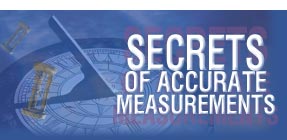 |
 |
 |
| RU |
|
Login
Newsletters
There is no newsletter category found. Information
|
Analog Devices’ Signal Processing Technology Helps CERN’s Large Hadron Collider Achieve Highest Possible Superconducting Magnet Performance 11/24/2011 The European Organization for Nuclear Research (CERN) in Switzerland and the University of Sannio, Benevento, Italy, have collaborated on the design of an advanced instrument for measuring magnetic fields in CERN’s Large Hadron Collider (LHC) superconducting magnets. Called the Fast Digital Integrator (FDI) board, this measurement device uses Analog Devices’ A/D converters, analog multiplexers and DSP components to provide the LHC with the highest possible performance achieved to-date in measuring magnetic fields. The new FDI board enables 100 times the resolution and frequency bandwidth of the previous generation digital integrator. This significant improvement in dynamic range enables scientists to detect even more minute artifacts that contribute to magnetic field variations, field decay and other time dependent phenomena typical in high-field superconducting accelerator magnets that all negatively affect the quality of particle beams under study. The new FDI boards are used at CERN to measure magnetic flux at 10 revolutions per second through fast-rotating calibrated coils that evaluate the magnetic field produced by the LHC’s 8 Tesla accelerator magnets. “Prior to the FDI board, the available electronic components were not suitable in terms of accuracy or resolution, which in the case of the Large Hadron Collider easily approaches 10 parts per million,” said Pasquale Arpaia, professor of engineering at the University of Sannio. “We chose to work with Analog Devices because the quality of the company’s products, documentation and support are all very high. This helped make it possible for the FDI to reveal new magnetic investigation regions that we were not able to explore before.” The LHC is the world’s largest and highest-energy particle accelerator, as well as the biggest machine ever built by humans. Construction started in 2003 and the LHC was operational in 2008. Its mission is to probe some of the most fundamental questions of physics and advance the understanding of the most fundamental laws of nature. Watch videos to learn more about CERN: cdsweb.cern.ch/collection/Videos Analog Devices Components Deliver Speed, Power and Low-noise Performance
Find can more here. Analog Devices, www.analog.com. |
Current issue
Search
|
|
|
| © "Test & Measuring Instruments and Systems" ("KIPiS"), 2000-2024 |

























